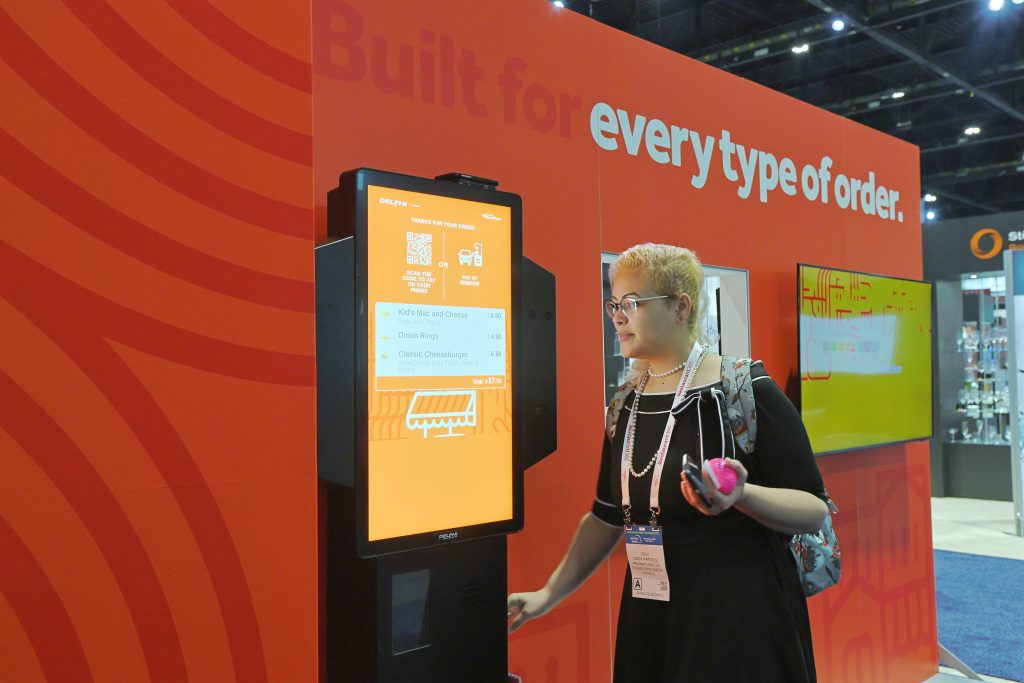What’s New in the Restaurant World
Luckbox attends the National Restaurant Association Show 2023
This May, the Luckbox team attended the annual National Restaurant Association Show in Chicago, gaining valuable insights into the ever-changing landscape of the food and restaurant industry. This convention gave us a peak into the trajectory of culinary innovations as well as coming innovations’ profound impact on the restaurant industry.
AI, meet the restaurant industry…
Like its previous initiatives, the latest show organized by the National Restaurant Association exhibits emerging trends, encompassing developments such as drive-thru AI and innovative meat alternatives.
The show emphasized a collaboration previously announced at the IO Google conference earlier in May: Wendy’s and Google’s language learning model AI (LLM). Referred to as “Wendy’s FreshAI,” it uses Google’s LLM in attempt to streamline the ordering process at drive-thrus.

The project addresses significant challenges posed by background noise in the vehicles and the differing terms customers use for menu items. Wendy’s FreshAI aims to tackle these issues, while also upselling upgrades to customers. The company hopes to deploy this AI in June and thus become the first to use AI chatbot in drive-thrus.
Plant-based trend continues
Besides more new tech entering the restaurant scene than ever before, other culinary innovations that have been brewing for some time hit the National Restaurant Association show, including meat and protein alternatives.
While plant-based proteins are not a novelty in restaurants, the market is witnessing a fresh wave of developments. It’s propelled by a shift in dietary choices, particularly among younger generations who are increasingly turning away from traditional meat-centered diets.
Embracing the plant-based lifestyle resonates deeply with Gen Z and millennial consumers, not only because of its potential health benefits but also its alignment with environmental consciousness.
Unlike previous iterations that aimed to replicate meat through vegetable-based substitutes, a new trend emerged at the show—mushroom centered dishes. This emphasizes harnessing the adaptable qualities of flat and soft mushrooms by removing moisture. The goal? To allow mushrooms to stand on their own, delivering a satiating meal different from a meat-centered dish, but just as satisfying.
While mushroom-trend lovers veer away from the previous wave of pea-protein that aims to taste like meat, the company Current Foods aims to employ pea-proteins to meat sources below sea level.
Current Foods was launched in 2019 and has since released two products, a pea-protein based tuna and a pea-protein based salmon. The company advertises it for use in sushi, salads and other meals where fish is eaten raw. It relies on plant-based flavorings from the ocean, such as algae oil and sea salt to mimic the flavor of raw fish.
This alternative seafood attempts to tackle environmental degradation caused by the fishing industry and also by the energy expenditure from storing raw fish.
Part of a tradition
Those show highlights marked a gathering backed by more than a century of tradition.
The National Restaurant Association, established in 1919, traces its origins back to a 1917 egg strike in Kansas City, Missouri. Originally headquartered there, the association relocated to Chicago in 1927.
The association has played a significant role in the restaurant business by adapting to changes in the industry’s economics and technology. In the 1950s, it embraced the growing popularity of “take home” meals alongside the rise of black and white television. Following 9/11 in 2001, the association organized the inaugural Dine for America, a fundraising event that generated over $20 million for charitable contributions.
Since its inception, the convention has been a gathering place for showcasing trends and staying up to date not only on the culinary business but also the technological and economic landscape of America.
For more on innovation in the food and restaurant industry, keep an eye out for the July issue of Luckbox: the Food Issue.





















